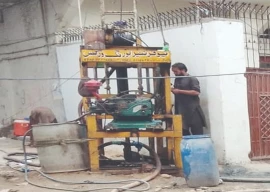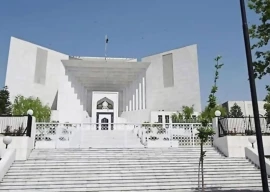
In Pimbahal neighbourhood of Lalitpur district, no one sleeps inside their homes. Even though mercury drops to as low as 12 degrees at night, most Nepalese sleep out on the streets in tents – within a stone’s throw of their houses.
“Ours is perhaps the only family that sleeps in their homes in this neighbourhood. We are comparatively less scared because we have a new house with stronger foundations,” Montessori Rajbhandari told The Express Tribune by phone from Nepal. It has been a very busy four days for Montessori, a broadcast journalist at Ujyaalo 90 Network, Nepal’s largest, independent radio network.
“We are reporting, sending out reporters as far as they can go, and coordinating with the government. In parts, roads are blocked. Kathmandu is still better off. But places like Sindhupalchowk district are in ruins. So many have died,” says Montessori.
Sindhupalchowk, Rasuwa, Nuwakot, Kavrepalanchowk, Kathmandu, Lalitpur and Bhaktapur are among the worst hit areas, says Montessori.
Estimates from UN say that some eight million people have been affected after the 7.8 magnitude quake hit the picturesque Nepal, already struggling with developmental issues like poverty and hunger.
“Krishna was up in the Dharahara Tower when the earthquake hit, one of the tallest buildings in Nepal. The tower collapsed; only the base remains. Krishna has survived,” says Montessori, sharing the incredible tale of survival of 27-year-old Krishna Ramtel, who is currently under treatment in Bir Hospital. Around 180 bodies were removed from the site of the crumbled tower. Built in 1832, Dharahara was one of the heritage sites of Nepal recognised by Unesco. “We had seven such sites; now we are left with only three. Four of our world heritage sites have been damaged badly.” Krishna’s story is up on the Ujyaalo website. “The headline is ‘Am I alive?’” says Montessori, translating into English.
The website is filled with videos and photographs of crumbled buildings and devastated people. Photographs show the dismal remnants of Khokana, a unique village in Lalitpur district, central Nepal. Known as a living museum, Khokana had kept its rich tradition alive, with its unusual mustard oil harvesting technique a tourist attraction.
The locals wonder if the municipality will ever rise from the rubble.
Answering a question regarding what the effected people need most, and how countries like Pakistan can help best, Montessori responds promptly by saying “food”. “Our people already suffer from hunger and food insecurity. They need to be fed”. In times of crises, worst hit are the vulnerable communities, especially women and children. “Take just one example. Paropakar Maternity and Women’s Hospital, Thapathali in Kathmandu, has been partially damaged and is cracked,” shares Montessori. "There are more patients now than the hospital can accommodate. The result is that women who are there for childbirth, and newborn babies, are living in the open air in cold weather. Cases of pneumonia are on the rise."
When asked if she and the people of Nepal are satisfied with their government’s performance in this hour of need, she laughs. “Everyone is complaining…In developing countries we are never satisfied that our governments are doing enough.”
Published in The Express Tribune, April 29th, 2015.


















COMMENTS
Comments are moderated and generally will be posted if they are on-topic and not abusive.
For more information, please see our Comments FAQ